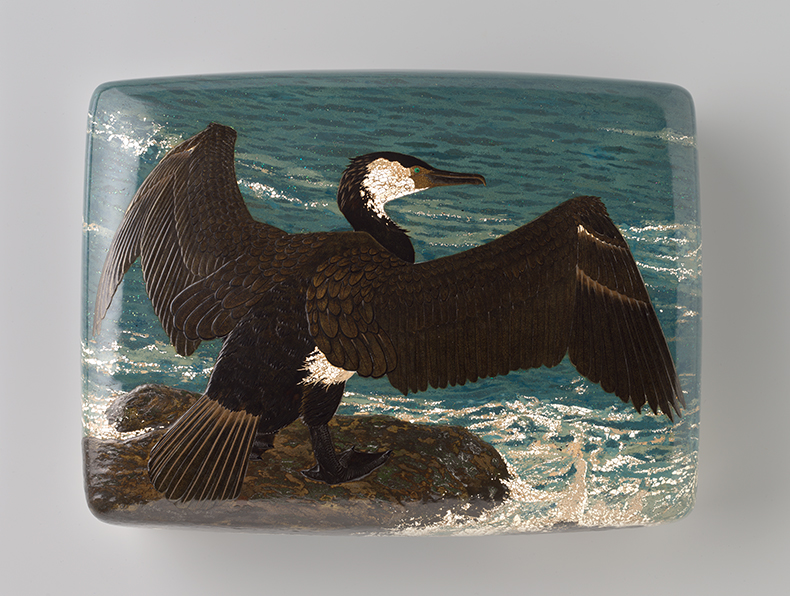This exhibition at the Rijksmuseum (1 July–4 September) traces the development of the art of lacquering throughout the 20th century. Beginning with the opening of the Tokyo School of Fine Arts in 1889, the exhibition explores how artists trained at this institution helped to modernise the decorative art form, before considering the ways in which Western influences transformed the technique during the 20th century, and the impact of commercial manufacturing through objects such as Yoshida Genjuro’s ornate writing boxes, produced for department stores in the 1920s. The exhibition also reveals how reduced access to gold and silver during the Second World War led to artists replacing precious metals with new colourful powders. These changes to the traditional makie technique are vividly demonstrated by the blue of Rokkaku Daijo’s accessory box, with its lively cormorant (1938). Find out more from the Rijksmuseum’s website.
Preview below | View Apollo’s Art Diary here
Accessory box with sea cormorant design (1938), Rokkaku Daijo. Rijksmuseum, Amsterdam

Writing box (1909), attributed to Tojima Kofu. Rijksmusuem, Amsterdam




